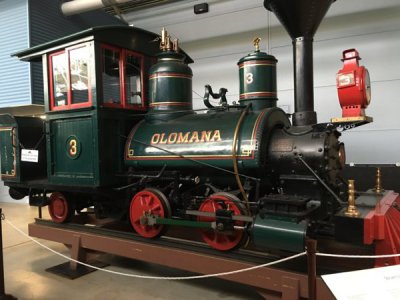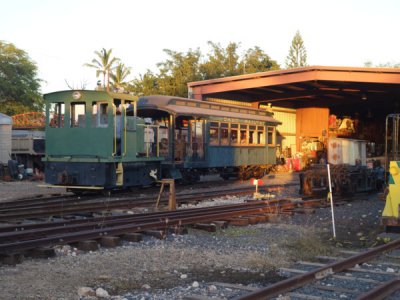G'day Glenn, we have quite a large system of sugar cane railways here in Downunder. The sugar cane area covers 1599km strip of oastal Queenslnd. Most of the track is 2ft gauge with a small amount of 3ft 6inch.
There are about 4,000 kilometres of track, of which about 3,000 kilometres is main line, transporting up to 36 million tonnes of sugar cane to the mills, each season. There are about 250 diesel hydraulic locomotives in use and about 52,000 cane "bins".
Rail in use is almost invariably 31 kg/m (60 lb/yd) on main lines and 22 kg/m (40 lb/yd) on branch lines and sidings There is a somewhat smaller system on the other side of the country in Nth West Western Australia
Not sure when I'll be in USA next, but as my daughter now lives in Colorado I expect it will be within a year or two, and I'll be glad to take up your offer.
Bob, well, you are describing some serious sugar cane. And some serious railroading capacity. Iam not well versed on the old time Hawaiian sugar cane industry, even though we lived on Oahu for 6 years or so back in the 90's. Hawaii Railway Society on Oahu currently operates about a 6 mile remnant of track from the old Oahu Railroad that used to circle the whole island. We rode the train and toured their back shops last winter while on vacation. I plan on volunteering in their shops for a couple of months later this winter, when we go back over as snowbirds. They have all the original engineering drawings of the ROW and equipment stored in cardboard boxes. Iam thinking of offering to help categorize and preserve the drawings in digital form, to save it from being lost due to,humidity and termites. Should learn more after we head back,over.
What I do know is, the Oahu railway was/is 36" gauge, and ran for 70 or 80 years or so, moving cane, freight, and daily passenger commuting service into and out of Honolulu. A lot of the ROW got converted to state Hiway after WW 2, and that sounded the death toll for commercial railroading in the islands, as the loss of roadbed couldn't be economically replaced with the big move to automotive transportation. There was also a round the island RR on the big Island of Hawaii. It was supposed to haul cane from all the big plantations on the windward side into Hilo, and service the leeward side to Kona for freight and passenger haulage. The pike got finished in 1949. Only operated for a few weeks before then1949 Tsunami hit Hilo and the Hamakua Coast - washing all the track and infrastructure, along with the railroads capital investment - into the ocean. So Never got re built, and didn't even have an opportunity to go into service.
However I've heard some, or many(?) of the bigger cane plantations had their own smaller narrow gauge RR's, with steam engines and track panels laid into the cane fields during harvest. These were the railways that used the smaller 12# rail, I think. As each field was harvested, the crews would move the track to the next harvesting area and carry the cane out in cane cars for processing. Almost all of Oahu, Maui, and Big Island were under cultivation at one point, so must have been a massive distributed operation, with hugh sugar cane mills at two or three locations around each island. Sometihing to see in its day.
Sounds like Australia is the cane producer of the world these days! Almost nothing left in Hawaii now - a few demonstration plots for tourists, and that's it. The Olomana, green loco in the first pic was the third steam powered device ever imported into Hawaii. Now resides at the Pennsylvania Railway Museum in Lancaster. Not sure how that relates to Sugar Cane. Abut there it sits. The last two pics were taken at the current Oahu Rway Society shops at
Eva Beach.
Anyway, when you get to the west coast, plan on stopping for a visit!
Cheers,
Glenn







